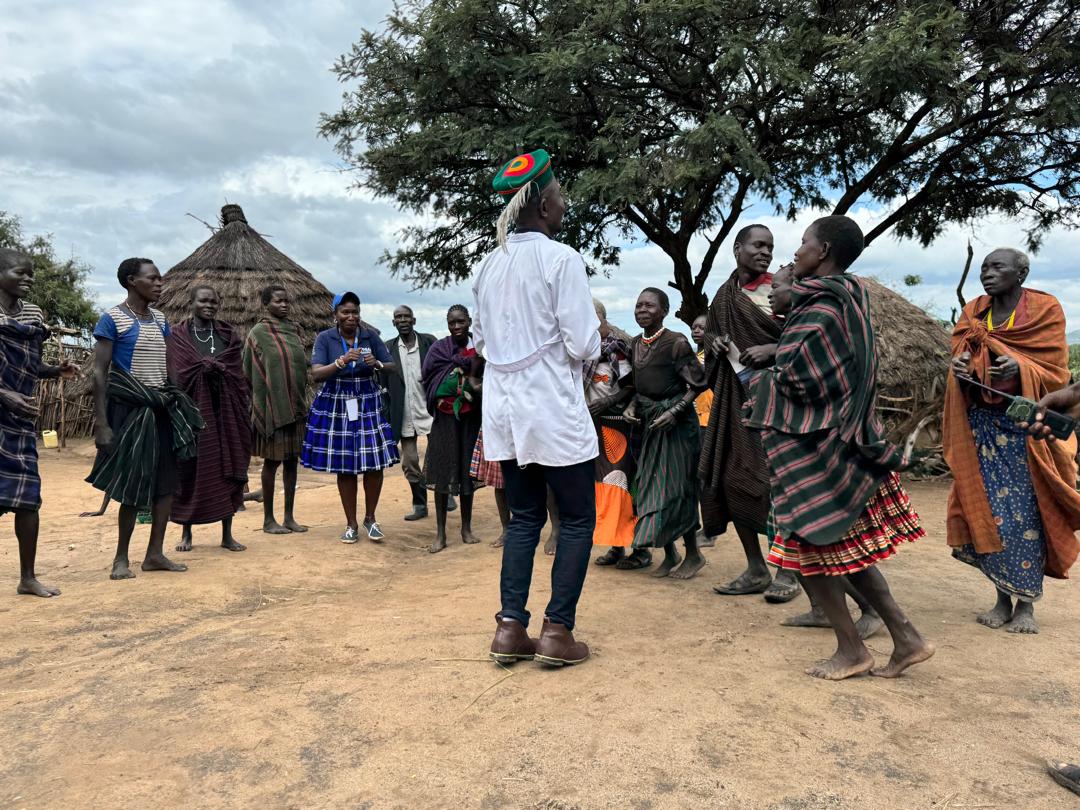KOTIDO—The Uganda Population-Based HIV Impact Assessment (UPHIA) survey has ended in Kotido District, Karamoja region, with a colorful cultural send-off. Residents in the Manyatta settlements marked the close of data collection with traditional dances, saluting the teams for their work.
The exercise, carried out by Team One, completed its final household visits in Moruiti, Rengen Subcounty, in Kotido district, northern Uganda. For several weeks, field workers gathered data on HIV and other health conditions, such as high blood pressure, diabetes, and obesity, in a nationally representative household-based survey—UPHIA 2025.

Community leader Odir Faustino, who helped mobilize residents, welcomed the survey. “Many people now know their health status. The initiative has been a tremendous benefit to our community,” he said.
Village Health Team member Locila Ritah said, “People were fully mobilized. I convinced them to take part because of the benefits to their lives, and I thank them for their cooperation.”

UPHIA Regional Mobilization Coordinator Acen Sharon credited early engagement with local leaders for the strong turnout. “Once the leaders understood the survey objectives, they spread the message. That brought a big turnout and very few refusals,” she said.
Team Leader Adiaka Catherine thanked residents for their cooperation and UPHIA management for supporting the field teams. “Most importantly, we are grateful for the chance to serve Ugandans through health data collection,” she said.
Local leaders saw broader value. LC1 Chairman of Moruiti, Lochu Moses, said the survey showed the government’s commitment to health. “It raises awareness about HIV and other diseases. I urge the government to keep bringing such services closer to those often omitted for lack of money,” he said.

Launched in May 2025 by the Ministry of Health in Uganda together with Makerere University School of Public Health and supported by the US government through the Centers for Disease Control and Prevention (CDC) and the US President’s Emergency Plan for AIDS Relief (PEPFAR), the survey collects blood samples, conducts HIV tests, and tracks conditions like hypertension and obesity. The third round builds on 2016 and 2020 findings, visiting 6,000 randomly selected households to reach at least 15,000 participants aged 15 and older for interviews and blood tests assessing viral suppression and other health indicators.

By Vincent Musoke



